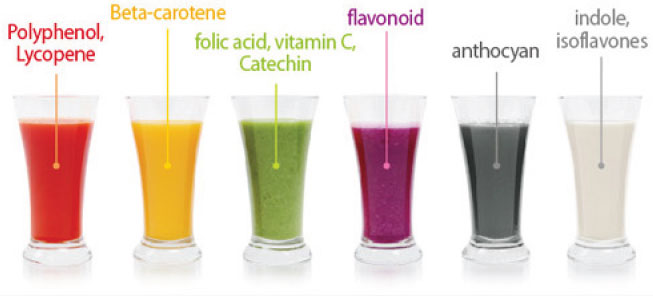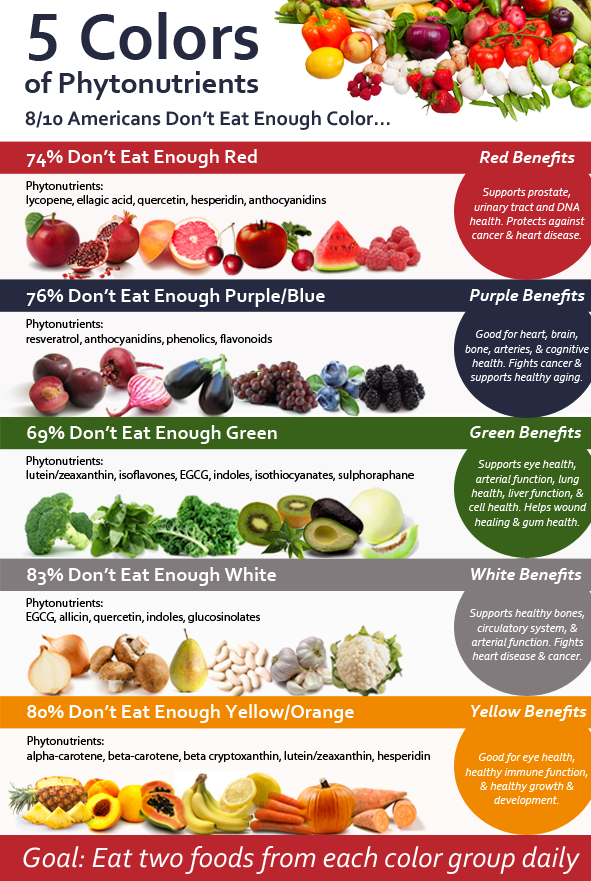More than 600 carotenoids provide yellow, orange, and red colors in fruits and vegetables.
Carotenoids act as antioxidants in your body. This means they tackle harmful free radicals that damage tissues throughout your body.
The types of carotenoids that may have other health benefits include:
Alpha-carotene, beta-carotene, and beta-cryptoxanthin. Your body can convert all of these to vitamin A. This vitamin helps keep your immune system working properly, and it’s needed for eye health. Yellow and orange foods like pumpkins and carrots are good sources of alpha- and beta-carotene.
These also contain beta-cryptoxanthin, as do sweet red peppers.
Lycopene. This gives red or pink color to: Tomatoes Watermelon and Pink grapefruit
Lycopene has been linked to a lower risk of prostate cancer.
Lutein and zeaxanthin. These may help protect you from cataracts and age-related macular degeneration, which are two types of eye problems.
Good sources of these phytonutrients are greens such as: Spinach Kale and Collards
Ellagic acid is found in a number of berries and other plant foods, especially: Strawberries, Raspberries and Pomegranates.
Ellagic acid may help protect against cancer through several different ways. For example, it may cause cancer cells to die. And it may help your liver neutralize cancer-causing chemicals in your system.
Flavonoids
A large number of phytonutrients fall into the flavonoid category. They are found in a variety of plant foods.
The types of flavonoids include: Catechins. Green tea is an especially good source of catechins. The drink may help prevent certain types of cancer.
Hesperidin. Found in citrus fruits, this flavonoid works as an antioxidant. It can reduce inflammation in the body. It may also help reduce the risk of cancer.
Flavonols. Quercetin is a well-studied type of flavonol. It is found in: Apples, Berries Grapes and Onions.
It might help reduce people’s risk of asthma, certain types of cancer, and coronary heart disease.
Resveratrol
Resveratrol is found in: Grapes, Purple grape juice and Red wine.
It acts as an antioxidant and anti-inflammatory. Some research suggests that resveratrol might reduce the risk of heart disease and cancer. And it may help extend people’s life span.
Glucosinolates. Glucosinolates are found in cruciferous vegetables, including: Brussels sprouts Cabbage Kale and Broccoli
They give these vegetables their sharp odor and flavor. The glucosinolates turn into other chemicals during the cooking process and while you digest these foods. These chemicals may help hold in check the development and growth of cancer.
Phytoestrogens
Phytoestrogens can behave in the body like the hormone estrogen. They can also block the effects of your natural supply of estrogen.
Soy foods contain isoflavones — a type of phytoestrogen. Some evidence suggests that soy foods may be linked to: Lower risk of endometrial cancer and Lower risk of bone loss in women
Your body converts lignans, another type of phytonutrient, into chemicals with some estrogen-like effects. Two especially good sources of lignans are: Flaxseeds and Sesame seeds.



